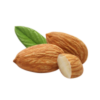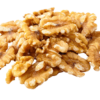5 Must-Have Tools for Woodworking Enthusiasts: A Comprehensive Guide Leave a comment
Woodworking is more than just a hobby. For many, it’s a creative outlet that blends artistry with practicality. From building furniture to crafting intricate designs, woodworking allows enthusiasts to turn raw materials into something both useful and beautiful. But to truly enjoy the craft and achieve high-quality results, having the right tools is essential. Not only do they make your work easier, but they also ensure precision and safety. In this guide, we’ll dive into five must-have tool categories that every woodworking enthusiast needs, whether you're just starting out or already have a workshop full of equipment.
Measuring and Layout Tools
Accurate measurements are the foundation of any successful woodworking project. Even a small error in measurement can throw off the entire project, so having the right tools for layout and measurement is crucial.
Tape Measure
The humble tape measure might seem basic, but it’s indispensable for woodworking. Look for a tape measure with clear, easy-to-read markings, a sturdy tape that won’t bend easily, and a locking mechanism to keep your measurements steady. Brands like Stanley or Milwaukee are popular for their durability and reliability.
Combination Square
A combination square helps you achieve precise 90-degree angles, making it an essential tool for cutting and marking. Beyond layout work, you can also use it as a straight edge or even a depth gauge. It’s an affordable yet invaluable tool that should be in every woodworker’s kit.
Marking Knife
While pencils are great for rough marks, a marking knife is what you need for fine, crisp lines, especially when working on joinery. It helps prevent the wood from tearing during cuts, giving you much cleaner edges.
Cutting Tools
No woodworking project can come to life without cutting tools. Whether you’re making straight cuts, curved shapes, or intricate details, the right cutting tools will allow you to shape your wood exactly how you envision it.
Hand Saw
Hand saws are classic woodworking tools and come in different varieties, each designed for a specific purpose. A rip saw, for example, is used for cutting along the wood grain, while a crosscut saw is ideal for cutting across the grain. They don’t require electricity, making them perfect for more traditional woodworking.
Circular Saw
If you’re looking for speed and power, a circular saw is an excellent choice. This tool is great for straight cuts on large boards and panels, saving you time and effort compared to a hand saw. Remember to prioritize safety, best scroll saws are powerful and can be dangerous if not handled properly.
Jigsaw
When your project calls for curves and intricate designs, the jigsaw is your go-to tool. Its ability to cut irregular shapes makes it perfect for more creative and detailed projects, like making rounded edges or custom cutouts.
Shaping and Smoothing Tools
After cutting your wood, the next step is to shape and smooth it to perfection. These tools help refine the wood and prepare it for assembly or finishing.
Chisels
Chisels are versatile tools used for carving, shaping, and even fine joinery. Depending on your project, you’ll need different types of chisels. For example, bench chisels are great for general use, while mortise chisels are ideal for making deep, square cuts.
Block Plane
A block plane is essential for smoothing out wood surfaces and trimming edges. Whether you’re flattening a board or shaving down a piece for a perfect fit, a well-tuned block plane can make the job a lot easier.
Sanding Tools
Sanding is one of the final steps before finishing, and it’s critical for a smooth, professional look. You can sand by hand using sandpaper, but power sanders like orbital sanders will save time and effort, especially for larger projects.
Joining Tools
No woodworking project is complete without joining pieces of wood together. Whether you're building a table, a cabinet, or a simple box, these tools will help you create strong, reliable joints.
Clamps
Clamps are essential for holding pieces together while glue dries or when you need an extra set of hands. There are different types of clamps for different applications, like bar clamps for larger pieces or spring clamps for lighter tasks.
Wood Glue
A strong wood glue is key for creating secure joints. Choose the right type of glue for your project, whether it's PVA glue for basic woodworking or epoxy for heavier tasks. Apply evenly and clean off excess to avoid any visible marks once the glue dries.
Pocket Hole Jig
For hidden joints, a pocket hole jig is a game-changer. It allows you to drill angled holes into one piece of wood and join it to another with screws, creating a seamless look without visible fasteners. It’s an excellent tool for furniture making and cabinetry.
Power Tools
Power tools can speed up your workflow and expand your capabilities. While some tools can be operated manually, power tools give you the precision and consistency needed for more advanced projects.
Power Drill
A power drill is one of the most versatile tools in any woodworking shop. It’s useful for drilling holes, driving screws, and even sanding or buffing with the right attachments. A cordless drill offers great flexibility, but a corded drill can provide more consistent power for heavy-duty tasks.
Router
Routers are essential for shaping edges, hollowing out areas, and creating detailed patterns in wood. Whether you’re working on intricate designs or just rounding off edges, a router can add a professional touch to your work.
Table Saw
The table saw is often the centerpiece of a woodworking shop. It’s perfect for making large, precise cuts in sheet goods and lumber. If you plan on building larger furniture pieces or need high accuracy in your cuts, a table saw is worth the investment.
Safety and Maintenance Tools
Working with wood can be dangerous if proper precautions aren’t taken. To protect yourself and keep your tools in good shape, investing in safety and maintenance tools is non-negotiable.
Safety Glasses
Your eyes are your most valuable tools, so protecting them is crucial. Safety glasses should be comfortable, durable, and offer clear vision. Always wear them when cutting, sanding, or handling any machinery.
Dust Collection System
Woodworking generates a lot of dust, which can be harmful if inhaled regularly. A dust collection system keeps your workspace clean and reduces the risk of respiratory issues. Even a small, portable system can make a big difference in your workshop.
Tool Maintenance Kit
Your tools are an investment, and keeping them in good condition is key to their longevity. A tool maintenance kit, complete with sharpening stones, lubricants, and cleaning brushes, will help ensure that your tools stay sharp and in working order.
Conclusion
Woodworking is a rewarding craft, but having the right tools is crucial for both your success and enjoyment. From measuring tools like tape measures and combination squares to cutting tools like saws and jigsaws, the essentials covered in this guide will set you up for success in any project. Power tools will save you time and expand your creative potential, while safety gear ensures that you can work without risk. Remember: investing in quality tools is investing in the quality of your work.
Essential Woodworking Tools Recap:
- Tape Measure
- Combination Square
- Marking Knife
- Hand Saw
- Circular Saw
- Jigsaw
- Chisels
- Block Plane
- Sanding Tools
- Clamps
- Wood Glue
- Pocket Hole Jig
- Power Drill
- Router
- Table Saw
- Safety Glasses
- Dust Collection System
- Tool Maintenance Kit
FAQs
What is the most essential woodworking tool for beginners?
A good tape measure and a hand saw are two of the most essential tools to start with. They’re affordable and will be used in almost every project.
How often should I sharpen chisels and hand saws?
Regularly check the sharpness of your chisels and saws, and sharpen them as soon as they start to feel dull. This will ensure clean cuts and easier work.
Can I start woodworking with just hand tools?
Absolutely! Many woodworkers start with just hand tools. As you progress, you can gradually add power tools to your collection.
What safety gear is absolutely necessary for woodworking?
At a minimum, you should have safety glasses, ear protection, and dust masks. For power tools, gloves and proper clothing are also important.
How do I choose between a corded and cordless power drill?
Cordless drills offer flexibility and are easier to handle, but corded drills provide consistent power for longer tasks. If you plan to do heavy-duty work, a corded drill might be better suited to your needs.








